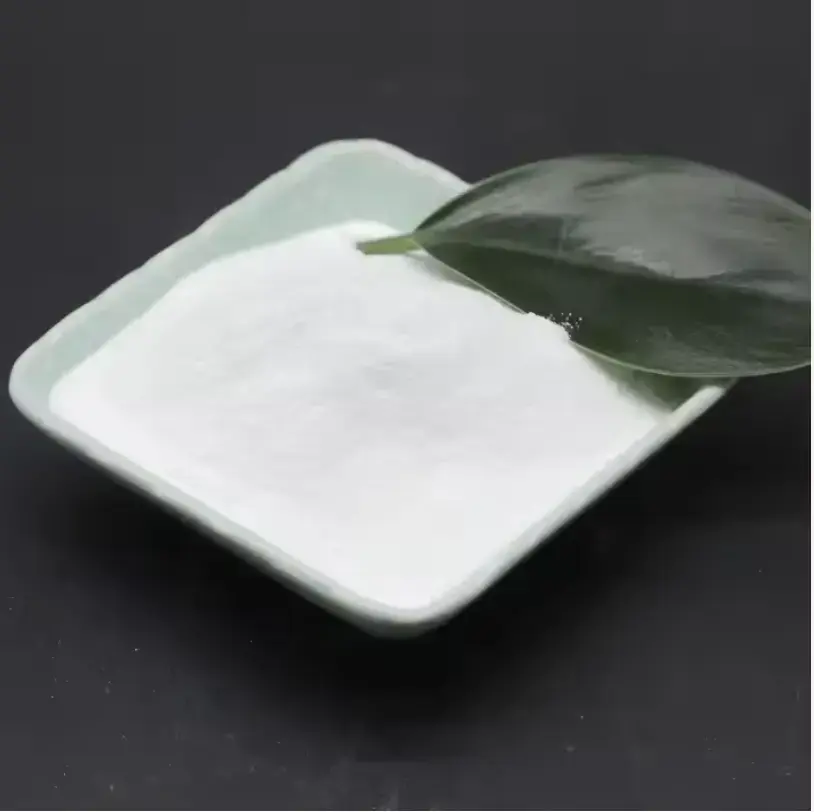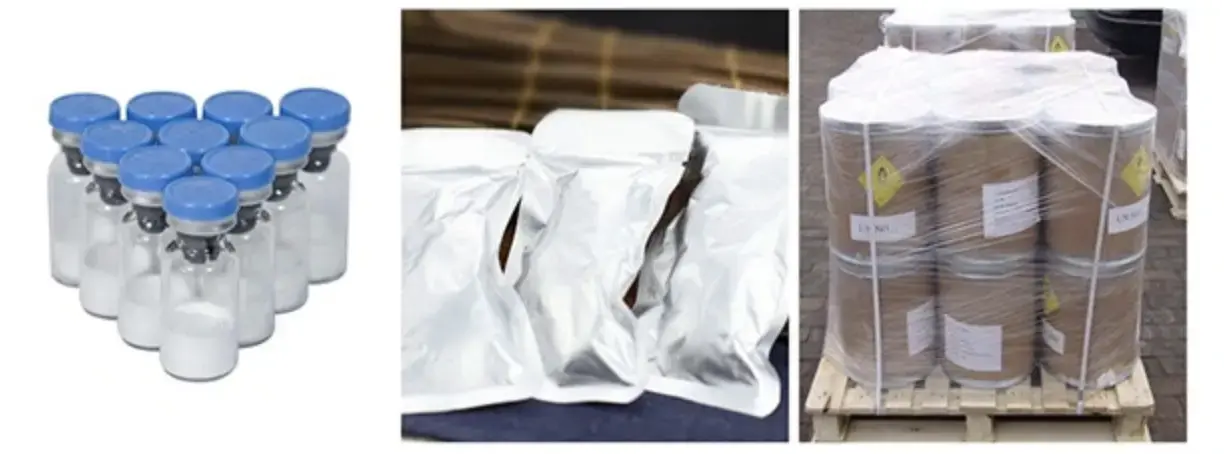In the ever-evolving world of food and beverage production, manufacturers are constantly seeking ingredients that can enhance texture, stability, and overall quality. One such versatile ingredient that has gained significant popularity is food grade xanthan gum raw material powder. This remarkable substance, derived from fermented sugar, has become a staple in numerous food and beverage applications due to its unique properties and wide-ranging benefits. In this comprehensive guide, we'll explore the various applications of xanthan gum powder in the food and beverage industry, diving into its uses in sauces, dressings, and bakery products, its role in improving beverage texture, and its importance in gluten-free and vegan formulations. Whether you're a food scientist, product developer, or simply curious about the ingredients in your favorite foods, this article will provide valuable insights into the world of xanthan gum.

Food grade xanthan gum raw material powder: uses in sauces, dressings, and bakery
Xanthan gum powder has become an indispensable ingredient in many food products, particularly in sauces, dressings, and bakery items. Its unique properties make it an excellent thickener, stabilizer, and emulsifier, contributing to improved texture, consistency, and shelf life.
Sauces and Dressings
In the realm of sauces and dressings, xanthan gum powder plays a crucial role in achieving the perfect consistency and mouthfeel. Here are some key applications:
- Emulsification: Xanthan gum helps to stabilize oil-in-water emulsions, preventing separation in salad dressings and mayonnaise.
- Texture enhancement: It imparts a smooth, creamy texture to sauces, eliminating graininess and improving overall mouthfeel.
- Suspension: Xanthan gum keeps spices and herbs evenly distributed throughout the sauce, preventing settling.
- Freeze-thaw stability: It helps maintain the texture and consistency of sauces and dressings during freezing and thawing cycles.
By incorporating food grade xanthan gum raw material powder into sauce and dressing formulations, manufacturers can achieve superior product quality and extended shelf life.
Bakery Applications
In the bakery industry, xanthan gum powder serves multiple purposes, enhancing both the production process and the final product:
- Dough improvement: It enhances dough elasticity and stability, resulting in improved handling and machinability.
- Moisture retention: Xanthan gum helps retain moisture in baked goods, extending freshness and shelf life.
- Texture enhancement: It contributes to a softer crumb and improved mouthfeel in various baked products.
- Volume increase: Xanthan gum can help increase the volume of baked goods, particularly in gluten-free formulations.
- Freeze-thaw stability: It improves the stability of frozen doughs and baked products during freezing and thawing.
By leveraging the properties of xanthan gum powder, bakers can create products with improved texture, longer shelf life, and enhanced consumer appeal.

How does xanthan gum raw material powder improve texture in beverages?
The beverage industry has also embraced the use of food grade xanthan gum raw material powder to enhance the texture and stability of various products. From fruit juices to dairy alternatives, xanthan gum plays a vital role in creating appealing and consistent beverages.
Suspension and Stability
One of the primary functions of xanthan gum in beverages is to improve suspension and stability:
- Particle suspension: It keeps fruit pulp, cocoa particles, and other solids evenly distributed throughout the beverage, preventing settling.
- Emulsion stability: Xanthan gum helps stabilize oil-in-water emulsions, crucial for beverages containing flavor oils or nutritional lipids.
- Foam stability: In carbonated beverages, it can enhance foam stability and mouthfeel.
Texture Enhancement
Xanthan gum contributes significantly to the texture and mouthfeel of beverages:
- Viscosity control: It allows manufacturers to adjust the thickness of beverages without significantly altering the flavor profile.
- Smooth mouthfeel: Xanthan gum imparts a smooth, creamy texture to beverages, enhancing the overall drinking experience.
- Body enhancement: It can add body to low-calorie or sugar-free beverages, mimicking the mouthfeel of full-sugar alternatives.
Shelf Life Extension
By improving stability and preventing separation, xanthan gum helps extend the shelf life of beverages:
- Reduced syneresis: It prevents water separation in juice-based beverages and dairy products.
- Improved freeze-thaw stability: Xanthan gum maintains beverage quality through temperature fluctuations during storage and distribution.
The versatility of food grade xanthan gum raw material powder in beverage applications makes it an invaluable tool for formulators seeking to create innovative, stable, and appealing products.
Food grade xanthan gum raw material powder in gluten-free and vegan formulations
As consumer demand for gluten-free and vegan products continues to grow, xanthan gum has emerged as a key ingredient in these specialized formulations. Its unique properties help overcome many of the challenges associated with removing gluten or animal-derived ingredients from food and beverage products.
Gluten-Free Applications
In gluten-free baking and food production, xanthan gum serves as a crucial binding and structuring agent:
- Dough elasticity: It mimics the elasticity typically provided by gluten, improving dough handling and texture.
- Crumb structure: Xanthan gum helps create a desirable crumb structure in gluten-free baked goods, preventing crumbliness.
- Moisture retention: It enhances moisture retention in gluten-free products, combating the dryness often associated with these items.
- Shelf life extension: By improving moisture retention and structure, xanthan gum helps extend the shelf life of gluten-free products.
Vegan Formulations
In vegan food production, xanthan gum plays a vital role in replicating textures typically achieved with animal-derived ingredients:
- Egg replacement: It can partially replace eggs in baked goods, providing binding and structure.
- Dairy alternative stabilization: Xanthan gum helps stabilize plant-based milk alternatives, preventing separation and improving mouthfeel.
- Vegan cheese texturization: It contributes to the stretchy, melty texture desired in vegan cheese alternatives.
- Meat alternative structuring: Xanthan gum can help improve the texture and binding of plant-based meat substitutes.
The versatility of food grade xanthan gum raw material powder in gluten-free and vegan applications has made it an indispensable ingredient for manufacturers catering to these growing market segments.
Dosage and Incorporation
When using xanthan gum in food and beverage formulations, it's crucial to consider proper dosage and incorporation techniques:
- Typical usage levels: Xanthan gum is typically used at concentrations ranging from 0.1% to 0.5% of the total formulation weight.
- Dispersion: Proper dispersion is key to avoiding clumps. Pre-mixing xanthan gum with other dry ingredients or using high-shear mixing can help achieve uniform dispersion.
- Hydration time: Allow sufficient hydration time for xanthan gum to fully develop its functional properties.
- Synergistic effects: Consider potential synergies with other hydrocolloids to optimize texture and stability.
By carefully considering these factors, formulators can maximize the benefits of xanthan gum in their products while avoiding potential pitfalls.
Regulatory Considerations
When incorporating food grade xanthan gum raw material powder into food and beverage formulations, it's essential to be aware of regulatory requirements:
- FDA approval: Xanthan gum is Generally Recognized as Safe (GRAS) by the U.S. Food and Drug Administration.
- European Union: It is approved as a food additive (E415) in the European Union.
- Labeling requirements: Xanthan gum must be declared on ingredient labels in most jurisdictions.
- Organic certification: Ensure that the xanthan gum source meets organic standards if producing organic-certified products.
Adhering to these regulatory considerations ensures compliance and transparency in product formulations.
Conclusion
Food grade xanthan gum raw material powder supplied by a food grade xanthan gum raw material powder supplier has proven to be a versatile and invaluable ingredient in the food and beverage industry. Its applications in sauces, dressings, bakery products, beverages, and specialized gluten-free and vegan formulations demonstrate its wide-ranging utility. By leveraging the unique properties of xanthan gum, manufacturers can enhance texture, improve stability, extend shelf life, and create innovative products that meet evolving consumer demands.
As the food and beverage landscape continues to evolve, the importance of versatile ingredients like xanthan gum is likely to grow. Whether you're developing a new product or optimizing an existing formulation, considering the incorporation of food grade xanthan gum raw material powder could be the key to achieving the desired texture, stability, and overall quality in your products.
FAQ
1. What is the shelf life of food grade xanthan gum raw material powder?
Food grade xanthan gum raw material powder typically has a shelf life of 2-3 years when stored in a cool, dry place in its original, sealed packaging. However, it's always best to check the specific manufacturer's recommendations for optimal storage conditions and shelf life.
2. Can xanthan gum powder be used in hot applications?
Yes, xanthan gum is heat-stable and can be used in hot applications. It maintains its thickening and stabilizing properties even at high temperatures, making it suitable for use in hot sauces, soups, and baked goods.
3. Is xanthan gum powder allergen-free?
While xanthan gum itself is not a common allergen, it's important to note that it can be derived from various sources, including corn, soy, or wheat. For individuals with severe allergies to these substances, it's crucial to verify the source of the xanthan gum with the manufacturer.
4. How does xanthan gum compare to other thickeners like guar gum or carrageenan?
Xanthan gum is often preferred for its stability across a wide range of pH levels and temperatures. It also provides excellent suspension properties. However, each thickener has its unique characteristics, and the choice depends on the specific application and desired product attributes.
Premium Food Grade Xanthan Gum Raw Material Powder Supplier | JIANBEI
Looking for a reliable supplier of high-quality food grade xanthan gum raw material powder? Look no further than Guangzhou Jianbei Biotechnology Co., Ltd. As a leading manufacturer and supplier in the industry, we offer premium xanthan gum powder that meets the highest standards of quality and purity. Our state-of-the-art production facilities and rigorous quality control processes ensure that you receive a consistent, high-performance product every time.
Whether you're formulating sauces, dressings, baked goods, beverages, or specialized gluten-free and vegan products, our xanthan gum powder can help you achieve the desired texture, stability, and shelf life. Our team of experts is ready to assist you with technical support and formulation advice to ensure you get the most out of our product.
Don't settle for anything less than the best for your food and beverage formulations. Contact us today at h33727868@gmail.com to discuss your xanthan gum needs and how we can support your product development goals. Experience the JIANBEI difference – where quality meets innovation in food grade xanthan gum raw material powder.
References
1. Smith, J. (2022). The Role of Hydrocolloids in Food Formulation: A Comprehensive Review. Journal of Food Science and Technology, 59(4), 1245-1260.
2. Johnson, A., & Brown, L. (2021). Xanthan Gum: Properties, Production, and Applications in the Food Industry. Food Hydrocolloids, 112, 106170.
3. García-Ochoa, F., Santos, V. E., Casas, J. A., & Gómez, E. (2020). Xanthan gum: production, recovery, and properties. Biotechnology Advances, 18(7), 549-579.
4. Lee, S., & Kim, Y. (2023). Recent Advances in Gluten-Free and Vegan Food Formulations: The Role of Novel Ingredients. Trends in Food Science & Technology, 131, 112-125.










